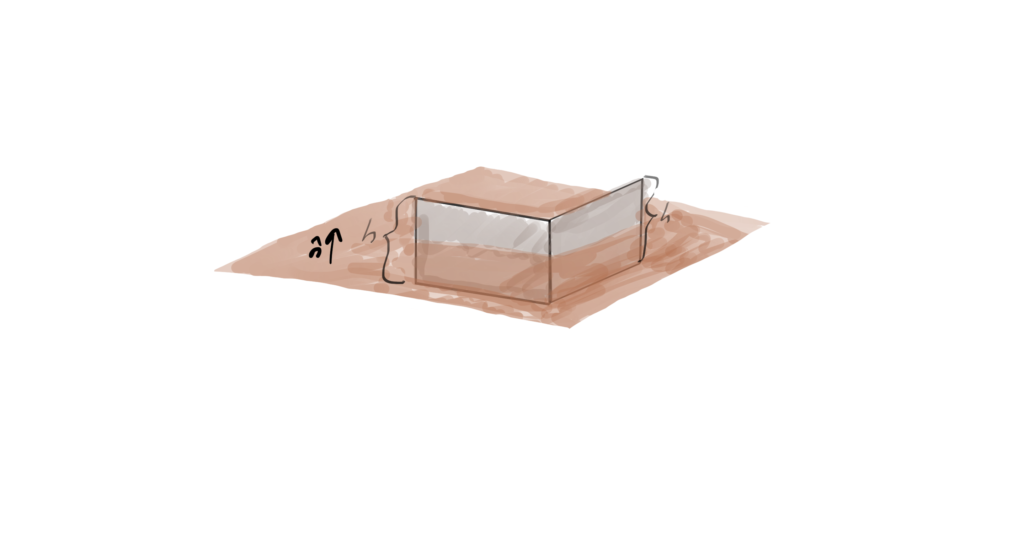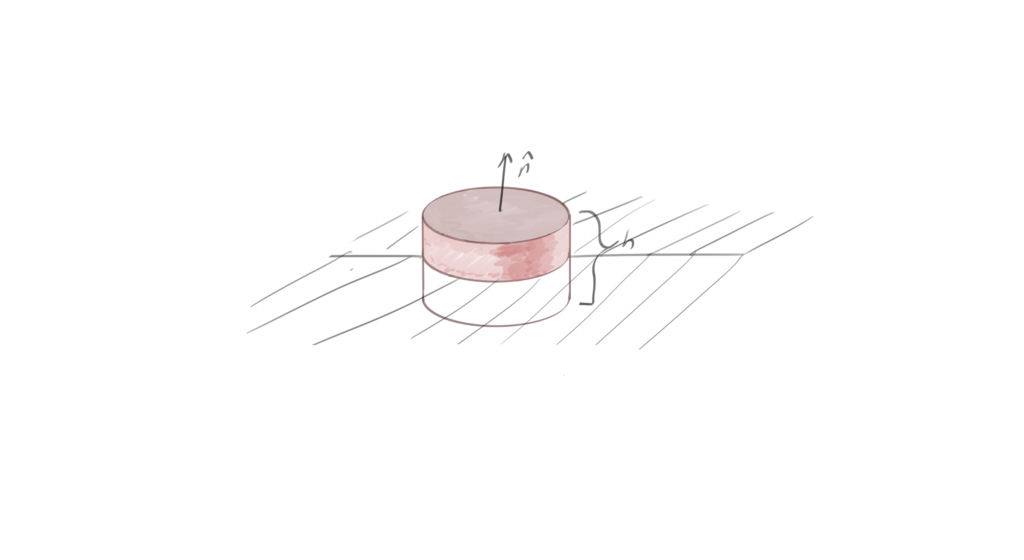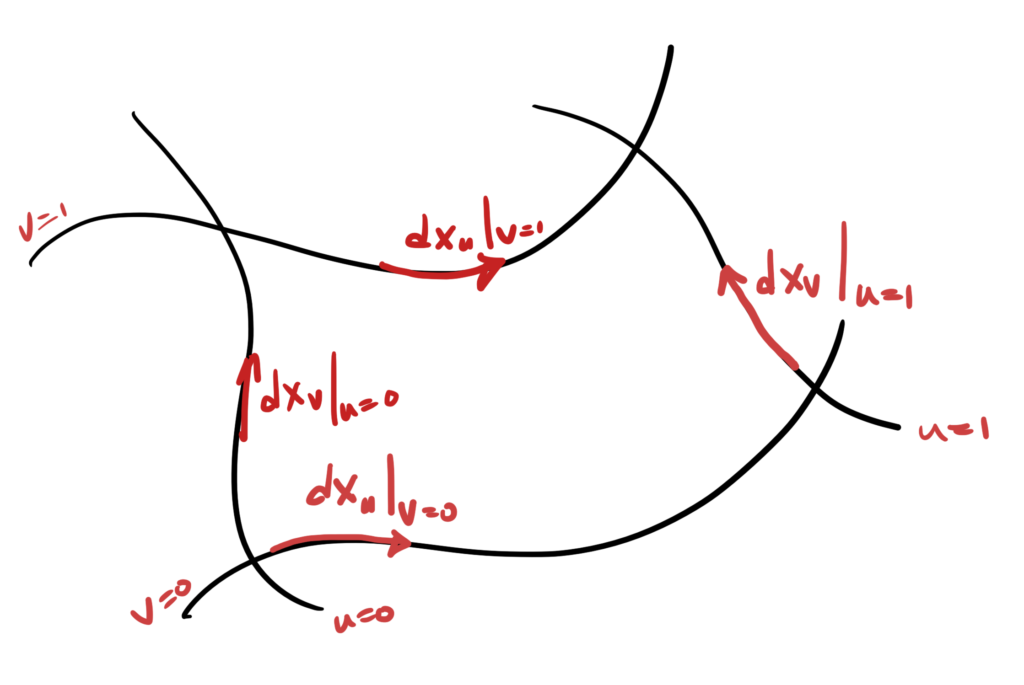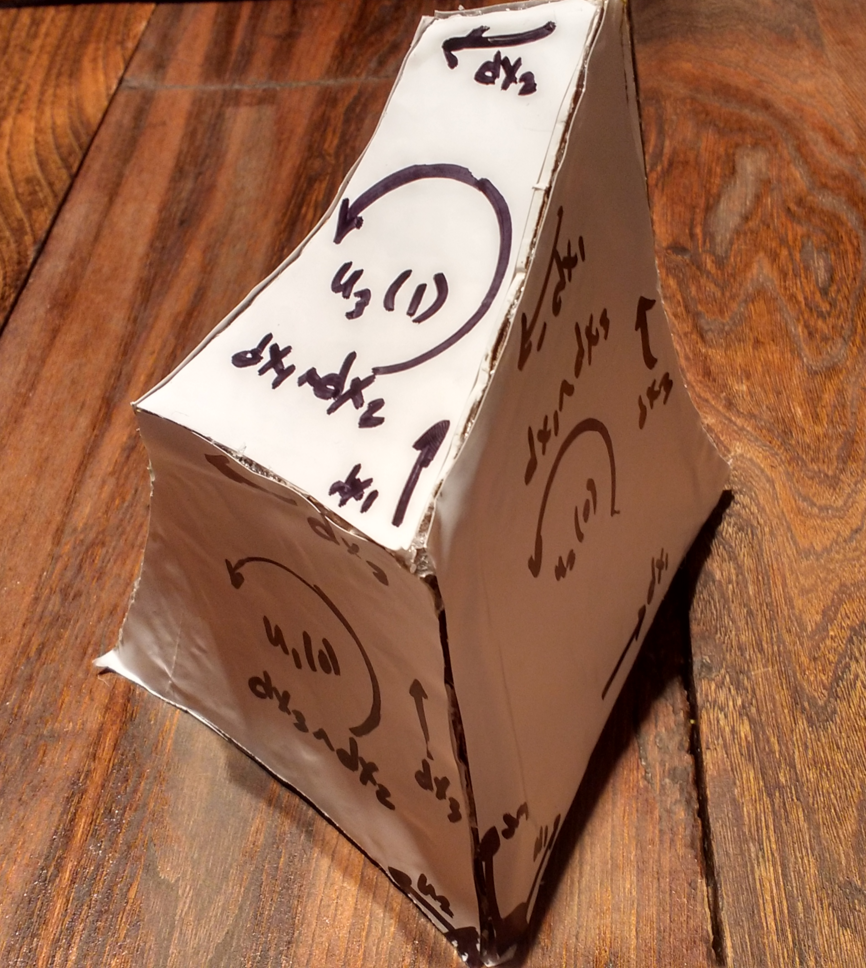The following is a possible introduction for a report for a UofT ECE2500 project associated with writing a small book: “Geometric Algebra for Electrical Engineers”. Given the space constraints for the report I may have to drop much of this, but some of the history of Maxwell’s equations may be of interest, so I thought I’d share before the knife hits the latex.
Goals of the project.
This project had a few goals
- Perform a literature review of applications of geometric algebra to the study of electromagnetism. Geometric algebra will be defined precisely later, along with bivector, trivector, multivector and other geometric algebra generalizations of the vector.
- Identify the subset of the literature that had direct relevance to electrical engineering.
- Create a complete, and as compact as possible, introduction of the prerequisites required
for a graduate or advanced undergraduate electrical engineering student to be able to apply
geometric algebra to problems in electromagnetism.
The many faces of electromagnetism.
There is a long history of attempts to find more elegant, compact and powerful ways of encoding and working with Maxwell’s equations.
Maxwell’s formulation.
Maxwell [12] employs some differential operators, including the gradient \( \spacegrad \) and Laplacian \( \spacegrad^2 \), but the divergence and gradient are always written out in full using coordinates, usually in integral form. Reading the original Treatise highlights how important notation can be, as most modern engineering or physics practitioners would find his original work incomprehensible. A nice translation from Maxwell’s notation to the modern Heaviside-Gibbs notation can be found in [16].
Quaterion representation.
In his second volume [11] the equations of electromagnetism are stated using quaterions (an extension of complex numbers to three dimensions), but quaternions are not used in the work. The modern form of Maxwell’s equations in quaternion form is
\begin{equation}\label{eqn:ece2500report:220}
\begin{aligned}
\inv{2} \antisymmetric{ \frac{d}{dr} }{ \BH } – \inv{2} \symmetric{ \frac{d}{dr} } { c \BD } &= c \rho + \BJ \\
\inv{2} \antisymmetric{ \frac{d}{dr} }{ \BE } + \inv{2} \symmetric{ \frac{d}{dr} }{ c \BB } &= 0,
\end{aligned}
\end{equation}
where \( \ifrac{d}{dr} = (1/c) \PDi{t}{} + \Bi \PDi{x}{} + \Bj \PDi{y}{} + \Bk \PDi{z}{} \) [7] acts bidirectionally, and vectors are expressed in terms of the quaternion basis \( \setlr{ \Bi, \Bj, \Bk } \), subject to the relations \(
\Bi^2 = \Bj^2 = \Bk^2 = -1, \quad
\Bi \Bj = \Bk = -\Bj \Bi, \quad
\Bj \Bk = \Bi = -\Bk \Bj, \quad
\Bk \Bi = \Bj = -\Bi \Bk \).
There is clearly more structure to these equations than the traditional Heaviside-Gibbs representation that we are used to, which says something for the quaternion model. However, this structure requires notation that is arguably non-intuitive. The fact that the quaterion representation was abandoned long ago by most electromagnetism researchers and engineers supports such an argument.
Minkowski tensor representation.
Minkowski introduced the concept of a complex time coordinate \( x_4 = i c t \) for special relativity [3]. Such a four-vector representation can be used for many of the relativistic four-vector pairs of electromagnetism, such as the current \((c\rho, \BJ)\), and the energy-momentum Lorentz force relations, and can also be applied to Maxwell’s equations
\begin{equation}\label{eqn:ece2500report:140}
\sum_{\mu= 1}^4 \PD{x_\mu}{F_{\mu\nu}} = – 4 \pi j_\nu.
\qquad
\sum_{\lambda\rho\mu=1}^4
\epsilon_{\mu\nu\lambda\rho}
\PD{x_\mu}{F_{\lambda\rho}} = 0,
\end{equation}
where
\begin{equation}\label{eqn:ece2500report:160}
F
=
\begin{bmatrix}
0 & B_z & -B_y & -i E_x \\
-B_z & 0 & B_x & -i E_y \\
B_y & -B_x & 0 & -i E_z \\
i E_x & i E_y & i E_z & 0
\end{bmatrix}.
\end{equation}
A rank-2 complex (Hermitian) tensor contains all six of the field components. Transformation of coordinates for this representation of the field may be performed exactly like the transformation for any other four-vector. This formalism is described nicely in [13], where the structure used is motivated by transformational requirements. One of the costs of this tensor representation is that we loose the clear separation of the electric and magnetic fields that we are so comfortable with. Another cost is that we loose the distinction between space and time, as separate space and time coordinates have to be projected out of a larger four vector. Both of these costs have theoretical benefits in some applications, particularly for high energy problems where relativity is important, but for the low velocity problems near and dear to electrical engineers who can freely treat space and time independently, the advantages are not clear.
Modern tensor formalism.
The Minkowski representation fell out of favour in theoretical physics, which settled on a real tensor representation that utilizes an explicit metric tensor \( g_{\mu\nu} = \pm \textrm{diag}(1, -1, -1, -1) \) to represent the complex inner products of special relativity. In this tensor formalism, Maxwell’s equations are also reduced to a set of two tensor relationships ([10], [8], [5]).
\begin{equation}\label{eqn:ece2500report:40}
\begin{aligned}
\partial_\mu F^{\mu \nu} &= \mu_0 J^\nu \\
\epsilon^{\alpha \beta \mu \nu} \partial_\beta F_{\mu \nu} &= 0,
\end{aligned}
\end{equation}
where \( F^{\mu\nu} \) is a \textit{real} rank-2 antisymmetric tensor that contains all six electric and magnetic field components, and \( J^\nu \) is a four-vector current containing both charge density and current density components. \Cref{eqn:ece2500report:40} provides a unified and simpler theoretical framework for electromagnetism, and is used extensively in physics but not engineering.
Differential forms.
It has been argued that a differential forms treatment of electromagnetism provides some of the same theoretical advantages as the tensor formalism, without the disadvantages of introducing a hellish mess of index manipulation into the mix. With differential forms it is also possible to express Maxwell’s equations as two equations. The free-space differential forms equivalent [4] to the tensor equations is
\begin{equation}\label{eqn:ece2500report:60}
\begin{aligned}
d \alpha &= 0 \\
d *\alpha &= 0,
\end{aligned}
\end{equation}
where
\begin{equation}\label{eqn:ece2500report:180}
\alpha = \lr{ E_1 dx^1 + E_2 dx^2 + E_3 dx^3 }(c dt) + H_1 dx^2 dx^3 + H_2 dx^3 dx^1 + H_3 dx^1 dx^2.
\end{equation}
One of the advantages of this representation is that it is valid even for curvilinear coordinate representations, which are handled naturally in differential forms. However, this formalism also comes with a number of costs. One cost (or benefit), like that of the tensor formalism, is that this is implicitly a relativistic approach subject to non-Euclidean orthonormality conditions \( (dx^i, dx^j) = \delta^{ij}, (dx^i, c dt) = 0, (c dt, c dt) = -1 \). Most grievous of the costs is the requirement to use differentials \( dx^1, dx^2, dx^3, c dt \), instead of a more familar set of basis vectors, even for non-curvilinear coordinates. This requirement is easily viewed as unnatural, and likely one of the reasons that electromagnetism with differential forms has never become popular.
Vector formalism.
Euclidean vector algebra, in particular the vector algebra and calculus of \( R^3 \), is the de-facto language of electrical engineering for electromagnetism. Maxwell’s equations in the Heaviside-Gibbs vector formalism are
\begin{equation}\label{eqn:ece2500report:20}
\begin{aligned}
\spacegrad \cross \BE &= – \PD{t}{\BB} \\
\spacegrad \cross \BH &= \BJ + \PD{t}{\BD} \\
\spacegrad \cdot \BD &= \rho \\
\spacegrad \cdot \BB &= 0.
\end{aligned}
\end{equation}
We are all intimately familiar with these equations, with the dot and the cross products, and with gradient, divergence and curl operations that are used to express them.
Given how comfortable we are with this mathematical formalism, there has to be a really good reason to switch to something else.
Space time algebra (geometric algebra).
An alternative to any of the electrodynamics formalisms described above is STA, the Space Time Algebra. STA is a relativistic geometric algebra that allows Maxwell’s equations to be combined into one equation ([2], [6])
\begin{equation}\label{eqn:ece2500report:80}
\grad F = J,
\end{equation}
where
\begin{equation}\label{eqn:ece2500report:200}
F = \BE + I c \BB \qquad (= \BE + I \eta \BH)
\end{equation}
is a bivector field containing both the electric and magnetic field “vectors”, \( \grad = \gamma^\mu \partial_\mu \) is the spacetime gradient, \( J \) is a four vector containing electric charge and current components, and \( I = \gamma_0 \gamma_1 \gamma_2 \gamma_3 \) is the spacetime pseudoscalar, the ordered product of the basis vectors \( \setlr{ \gamma_\mu } \). The STA representation is explicitly relativistic with a non-Euclidean relationships between the basis vectors \( \gamma_0 \cdot \gamma_0 = 1 = -\gamma_k \cdot \gamma_k, \forall k > 0 \). In this formalism “spatial” vectors \( \Bx = \sum_{k>0} \gamma_k \gamma_0 x^k \) are represented as spacetime bivectors, requiring a small slight of hand when switching between STA notation and conventional vector representation. Uncoincidentally \( F \) has exactly the same structure as the 2-form \(\alpha\) above, provided the differential 1-forms \( dx^\mu \) are replaced by the basis vectors \( \gamma_\mu \). However, there is a simple complex structure inherent in the STA form that is not obvious in the 2-form equivalent. The bivector representation of the field \( F \) directly encodes the antisymmetric nature of \( F^{\mu\nu} \) from the tensor formalism, and the tensor equivalents of most STA results can be calcualted easily.
Having a single PDE for all of Maxwell’s equations allows for direct Green’s function solution of the field, and has a number of other advantages. There is extensive literature exploring selected applications of STA to electrodynamics. Many theoretical results have been derived using this formalism that require significantly more complex approaches using conventional vector or tensor analysis. Unfortunately, much of the STA literature is inaccessible to the engineering student, practising engineers, or engineering instructors. To even start reading the literature, one must learn geometric algebra, aspects of special relativity and non-Euclidean geometry, generalized integration theory, and even some tensor analysis.
Paravector formalism (geometric algebra).
In the geometric algebra literature, there are a few authors who have endorsed the use of Euclidean geometric algebras for relativistic applications ([1], [14])
These authors use an Euclidean basis “vector” \( \Be_0 = 1 \) for the timelike direction, along with a standard Euclidean basis \( \setlr{ \Be_i } \) for the spatial directions. A hybrid scalar plus vector representation of four vectors, called paravectors is employed. Maxwell’s equation is written as a multivector equation
\begin{equation}\label{eqn:ece2500report:120}
\lr{ \spacegrad + \inv{c} \PD{t}{} } F = J,
\end{equation}
where \( J \) is a multivector source containing both the electric charge and currents, and \( c \) is the group velocity for the medium (assumed uniform and isometric). \( J \) may optionally include the (fictitious) magnetic charge and currents useful in antenna theory. The paravector formalism uses a the hybrid electromagnetic field representation of STA above, however, \( I = \Be_1 \Be_2 \Be_3 \) is interpreted as the \( R^3 \) pseudoscalar, the ordered product of the basis vectors \( \setlr{ \Be_i } \), and \( F \) represents a multivector with vector and bivector components. Unlike STA where \( \BE \) and \( \BB \) (or \( \BH \)) are interpretted as spacetime bivectors, here they are plain old Euclidian vectors in \( R^3 \), entirely consistent with conventional Heaviyside-Gibbs notation. Like the STA Maxwell’s equation, the paravector form is directly invertible using Green’s function techniques, without requiring the solution of equivalent second order potential problems, nor any requirement to take the derivatives of those potentials to determine the fields.
Lorentz transformation and manipulation of paravectors requires a variety of conjugation, real and imaginary operators, unlike STA where such operations have the same complex exponential structure as any 3D rotation expressed in geometric algebra. The advocates of the paravector representation argue that this provides an effective pedagogical bridge from Euclidean geometry to the Minkowski geometry of special relativity. This author agrees that this form of Maxwell’s equations is the natural choice for an introduction to electromagnetism using geometric algebra, but for relativistic operations, STA is a much more natural and less confusing choice.
Results.
The end product of this project was a fairly small self contained book, titled “Geometric Algebra for Electrical Engineers”. This book includes an introduction to Euclidean geometric algebra focused on \( R^2 \) and \( R^3 \) (64 pages), an introduction to geometric calculus and multivector Green’s functions (64 pages), and applications to electromagnetism (75 pages). This report summarizes results from this book, omitting most derivations, and attempts to provide an overview that may be used as a road map for the book for further exploration. Many of the fundamental results of electromagnetism are derived directly from the geometric algebra form of Maxwell’s equation in a streamlined and compact fashion. This includes some new results, and many of the existing non-relativistic results from the geometric algebra STA and paravector literature. It will be clear to the reader that it is often simpler to have the electric and magnetic on equal footing, and demonstrates this by deriving most results in terms of the total electromagnetic field \( F \). Many examples of how to extract the conventional electric and magnetic fields from the geometric algebra results expressed in terms of \( F \) are given as a bridge between the multivector and vector representations.
The aim of this work was to remove some of the prerequisite conceptual roadblocks that make electromagnetism using geometric algebra inaccessbile. In particular, this project explored non-relativistic applications of geometric algebra to electromagnetism. After derivation from the conventional Heaviside-Gibbs representation of Maxwell’s equations, the paravector representation of Maxwell’s equation is used as the starting point for of all subsequent analysis. However, the paravector literature includes a confusing set of conjugation and real and imaginary selection operations that are tailored for relativisitic applications. These are not neccessary for low velocity applications, and have been avoided completely with the aim of making the subject more accessibility to the engineer.
In the book an attempt has been made to avoid introducing as little new notation as possible. For example, some authors use special notation for the bivector valued magnetic field \( I \BB \), such as \( \boldsymbol{\mathcal{b}} \) or \( \Bcap \). Given the inconsistencies in the literature, \( I \BB \) (or \( I \BH \)) will be used explicitly for the bivector (magnetic) components of the total electromagnetic field \( F \). In the geometric algebra literature, there are conflicting conventions for the operator \( \spacegrad + (1/c) \PDi{t}{} \) which we will call the spacetime gradient after the STA equivalent. For examples of different notations for the spacetime gradient, see [9], [1], and [15]. In the book the spacetime gradient is always written out in full to avoid picking from or explaining some of the subtlties of the competing notations.
Some researchers will find it distasteful that STA and relativity have been avoided completely in this book. Maxwell’s equations are inherently relativistic, and STA expresses the relativistic aspects of electromagnetism in an exceptional and beautiful fashion. However, a student of this book will have learned the geometric algebra and calculus prerequisites of STA. This makes the STA literature much more accessible, especially since most of the results in the book can be trivially translated into STA notation.
References
[1] William Baylis. Electrodynamics: a modern geometric approach, volume 17. Springer Science \& Business Media, 2004.
[2] C. Doran and A.N. Lasenby. Geometric algebra for physicists. Cambridge University Press New York, Cambridge, UK, 1st edition, 2003.
[3] Albert Einstein. Relativity: The special and the general theory, chapter Minkowski’s Four-Dimensional Space. Princeton University Press, 2015. URL http://www.gutenberg.org/ebooks/5001.
[4] H. Flanders. Differential Forms With Applications to the Physical Sciences. Courier Dover Publications, 1989.
[5] David Jeffrey Griffiths and Reed College. Introduction to electrodynamics. Prentice hall Upper Saddle River, NJ, 3rd edition, 1999.
[6] David Hestenes. Space-time algebra, volume 1. Springer, 1966.
[7] Peter Michael Jack. Physical space as a quaternion structure, i: Maxwell equations. a brief note. arXiv preprint math-ph/0307038, 2003. URL https://arxiv.org/abs/math-ph/0307038.
[8] JD Jackson. Classical Electrodynamics. John Wiley and Sons, 2nd edition, 1975.
[9] Bernard Jancewicz. Multivectors and Clifford algebra in electrodynamics. World Scientific, 1988.
[10] L.D. Landau and E.M. Lifshitz. The classical theory of fields. Butterworth-Heinemann, 1980. ISBN 0750627689.
[11] James Clerk Maxwell. A treatise on electricity and magnetism, volume II. Merchant Books, 1881.
[12] James Clerk Maxwell. A treatise on electricity and magnetism, third edition, volume I. Dover publications, 1891.
[13] M. Schwartz. Principles of Electrodynamics. Dover Publications, 1987.
[14] Chappell et al. A simplified approach to electromagnetism using geometric algebra. arXiv preprint arXiv:1010.4947, 2010.
[15] Chappell et al. Geometric algebra for electrical and electronic engineers. 2014.
[16] Chappell et al. Geometric Algebra for Electrical and Electronic Engineers, 2014



